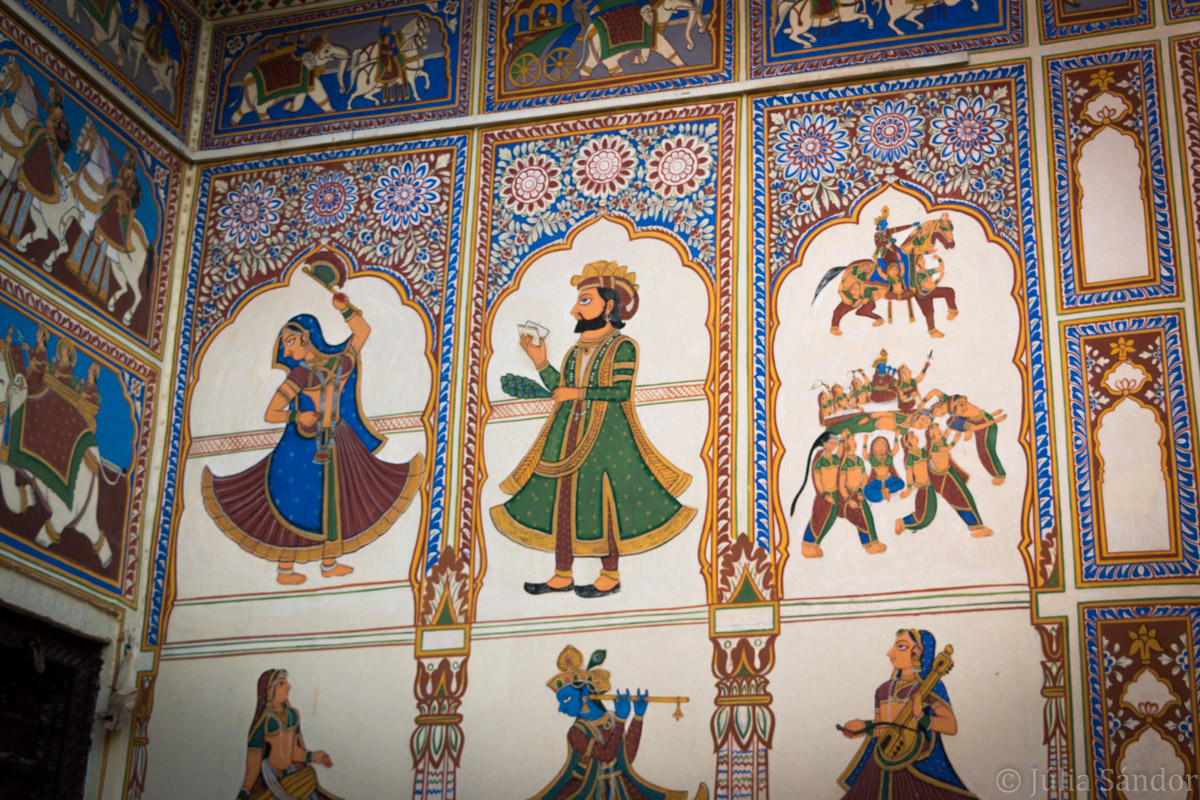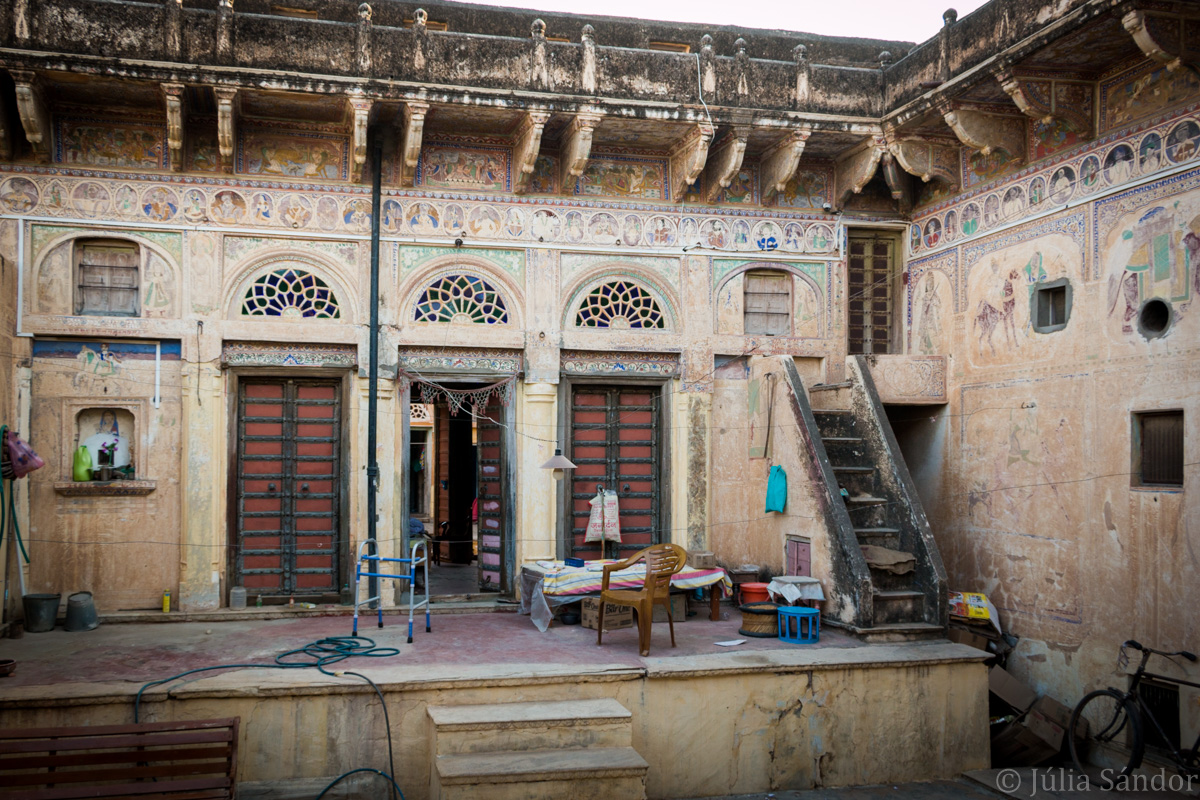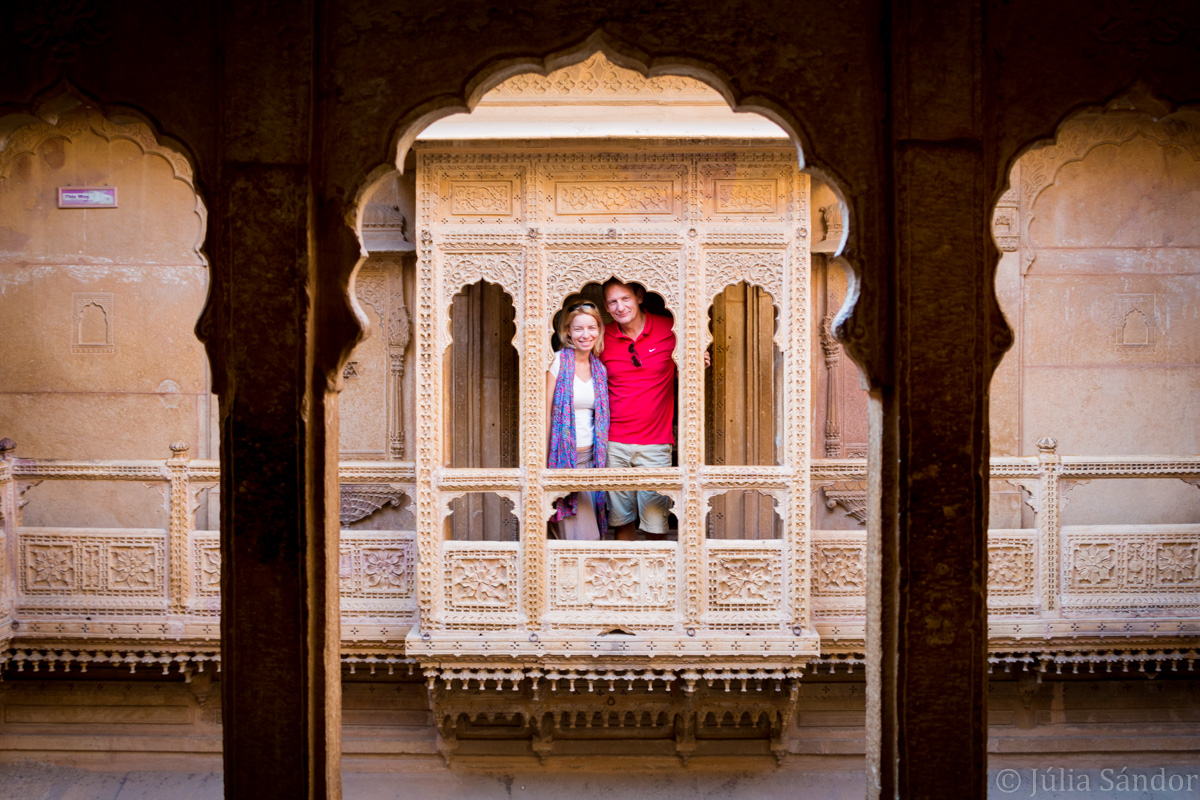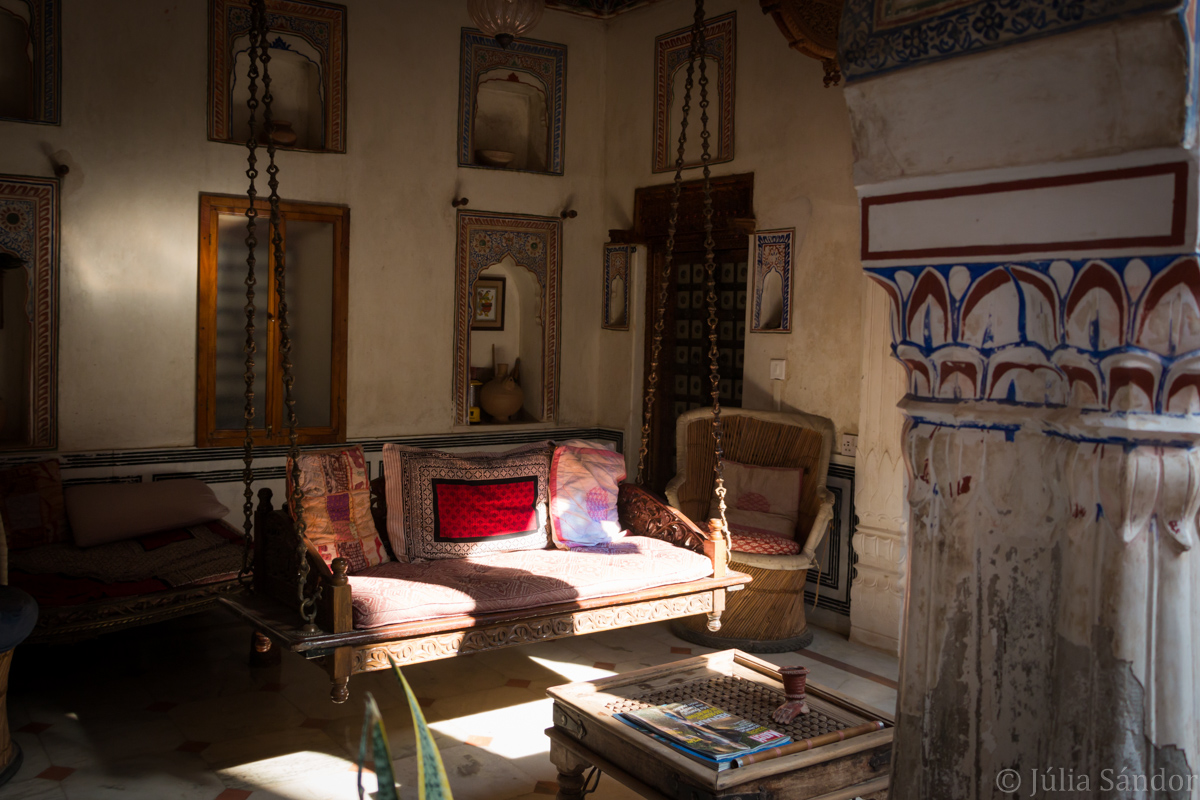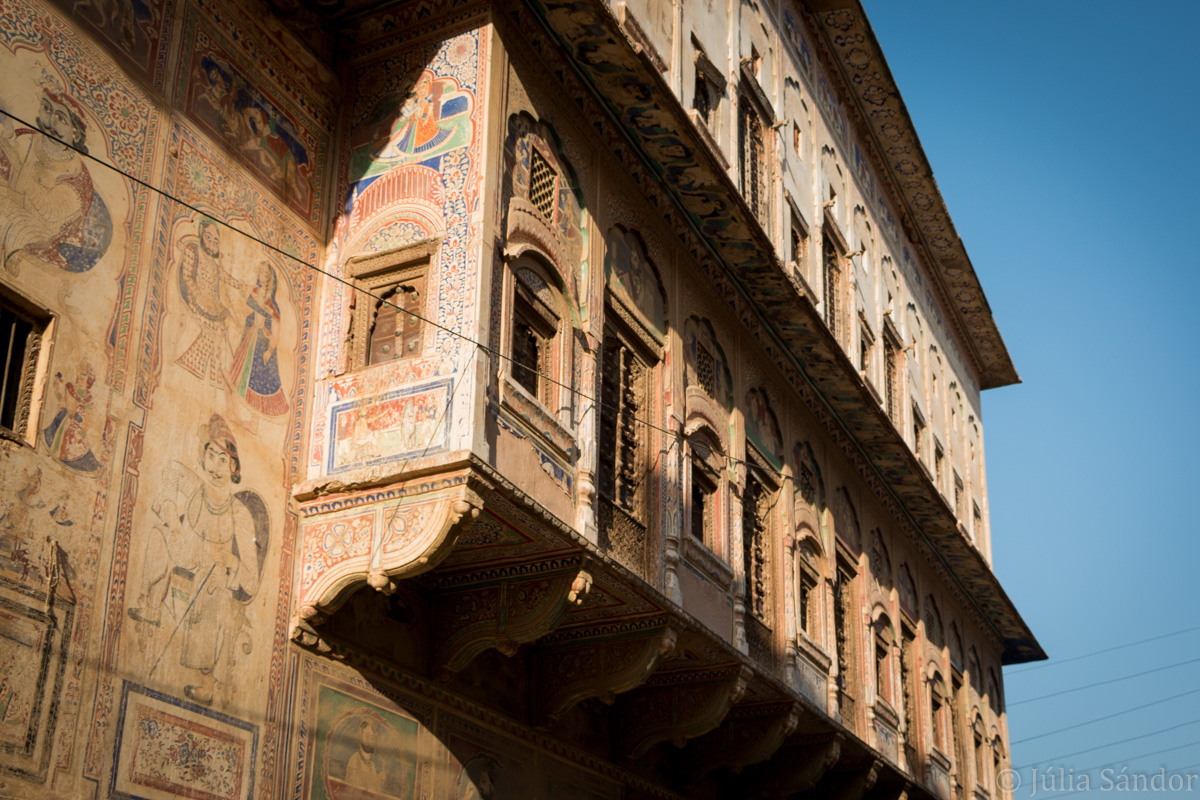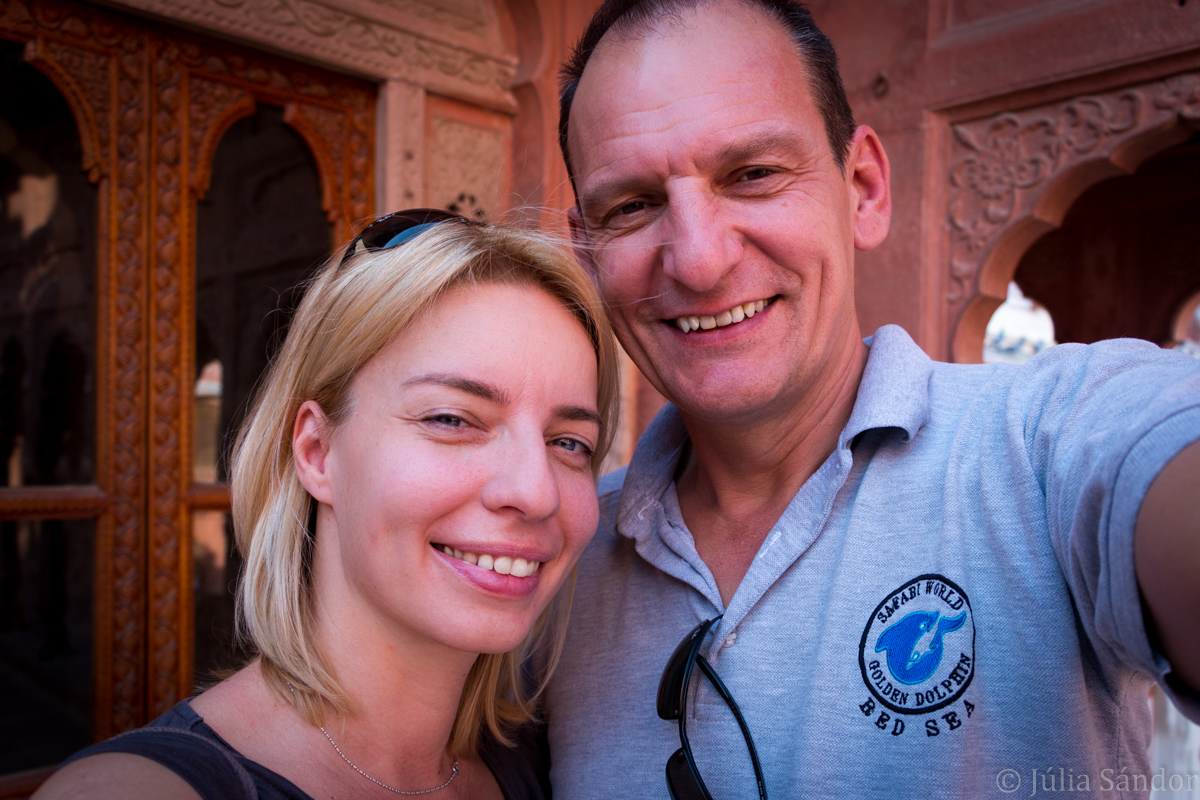In the first days of our Rajasthan tour we have been visiting several havelis. These are impressive mansions mainly from the 19th century, which are among the most important non-religious architectural landmarks of Rajasthan. Adorned by murals, beautiful artwork and paintings, the havelis were designed to reflect the prosperity of the owner.
They were built by wealthy merchants, aristocrats or maharajas along the old Silk Road where the caravans passed by. These palaces served several purposes. First of all, this was the place where the merchants received the caravans and negotiated their deals. At the same time havelis were also the homes where several generations lived together.
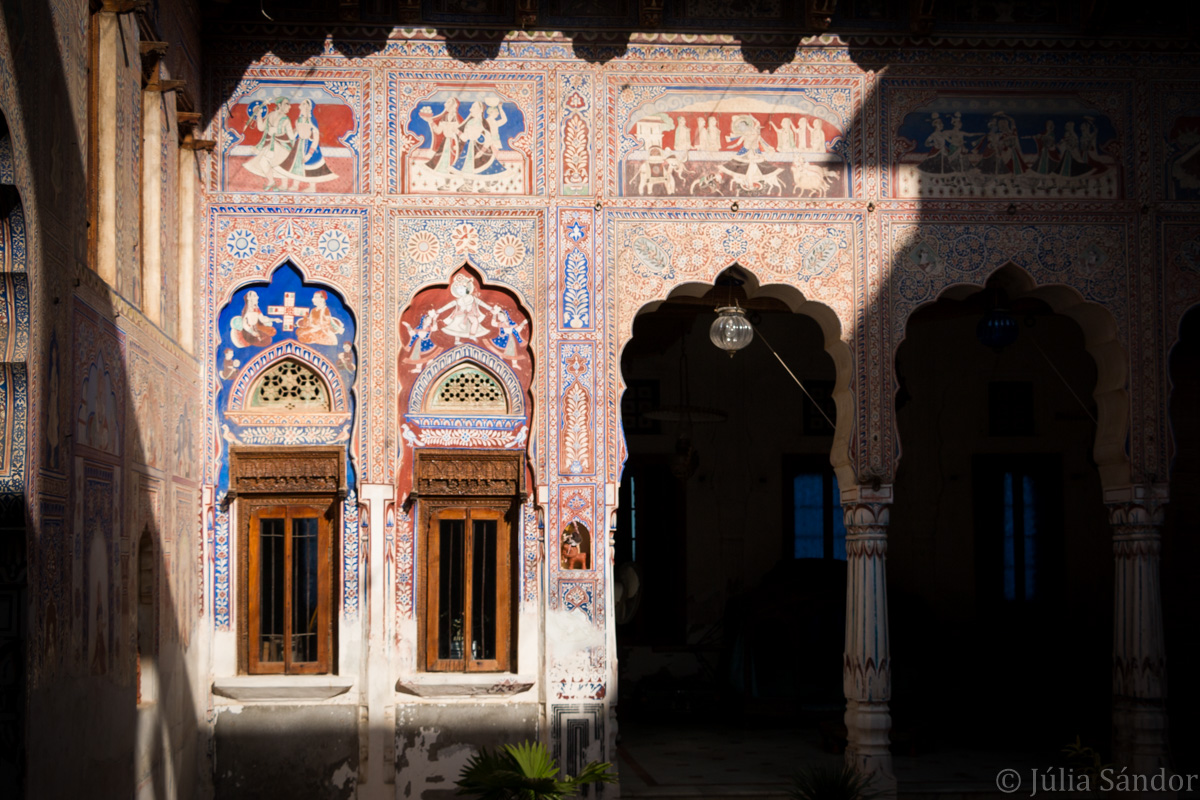
Structure and decoration of the havelis of Rajasthan
The wall decoration shows the way of life and the importance of the religion in those days. Scenes from everyday life are mixed with drawings from Shiva, Vishnu, Brahma and other idols.
The architecture of the havelis also reflect values and customs. Just to mention 2 interesting examples:
- The courts were the centers of life in these buildings. The front ones were open to the public and mainly used by men. The ones in the back served only private purposes. This is where women and children spent their time, hidden from the eyes of foreigners.
- The wooden entrance doors of the havelis were huge, but were only opened on special occasions. Otherwise there were tiny openings on the large gate wings. First of all to protect from invaders, and also to force the incoming to bow, and thereby show respect.

Havelis of Rajasthan today
Due to the declining importance of caravans, the merchants moved on to other trading areas, like harbors or new big cities. So the buildings were left behind.
This is why many of these impressive houses are in a very bad shape today. As they were built of sandstone and decorated by natural colors they would need permanent restauration. Many of them have remained in private ownership, but the owners do not invest in maintaining them.
Fortunately, some havelis found new investors and have been turned into museums, art galleries, small hotels or restaurants. As such they have been wonderfully restored and still show their old splendor.
The most beautiful ones we have seen are to be found in Mandawa – the Jhunjhunu Wala, in Fatehpur – the Nadine Le Prince and in Jaisalmer – the Patwa Haveli.
We were also lucky enough to spend a couple of nights in some of these converted palaces and it felt like being put back into the past… :)









